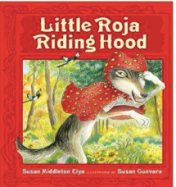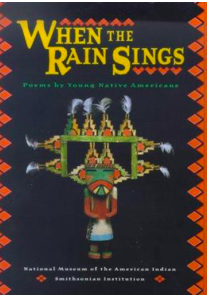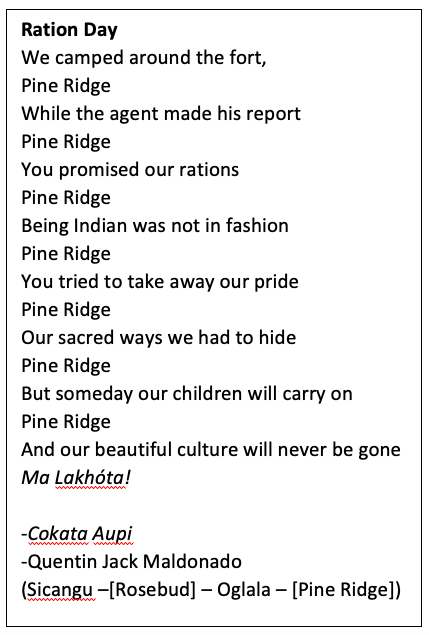By Liz Mahon
A translanguaging pedagogy is when teachers create classrooms that welcome and plan for the complex language practices of bilinguals. The two images below are examples of translanguaging in a community setting:
Translanguaging shows the fluidity of language practices where bilinguals use all linguistic resources including named languages (i.e., Spanish, English), formal and informal registers, images, body language, and intonation to comprehend the world and express meaning.
Adopting a translanguaging pedagogy can be an act of resistance. This pedagogy challenges the imperative of English in schools and rejects racist and anti-immigrant ideologies. A translanguaging pedagogy also challenges deficit views, allowing bilingual students to shine and show their brilliance when they bring all their linguistic resources to school.
There are many ways to create a classroom which welcomes translanguaging. (See this free Translanguaging Guide from CUNY-NYSIEB). For the past four years, I have focused on one way: Collecting, studying and using translanguaging children’s literature in classrooms. To do this, I have worked with teachers and students using an inquiry lens to ask:
- Why do authors use translanguaging?
- What effect does translanguaging have on an audience?
- How do language conventions work with translanguaging texts?
Let’s look at some examples to get the idea.

There once was a niña who lived near the woods.
She like to wear colorful capas with hoods.
“Roja” called Mom from her telenovelas.
“go through the woods till you get to Abuela’s.”
(Elya, 2014)
Translanguaging with a Fairy Tale:
Teachers and students notice many interesting points about translanguaging with regards to author purpose and conventions with this example. Teachers and students said that the author used translanguaging to:
- Show how bilinguals really talk and tell stories
- Make the story more Mexican
- Show off her Spanish
- Play with the rhymes and rhythms in both languages
Monolingual English speakers noted that they were able to infer the meaning of the Spanish words by using context. They also asked their Spanish speaking classmates for help which gives the bilingual speakers the role of the expert with translanguaging texts.
In terms of conventions, using a possessive apostrophe with Abuela’s also leads to rich discussions around language. In Spanish, possession would be expressed by saying la casa de abuela. The author of this text chooses to use the English construction of possession with a Spanish word. Furthermore, in this book, there is not a glossary or pronunciation guide. Noticing the conventions and text features used in translanguaging texts is important as students will need to make choices as to which conventions to incorporate into their own writing when they begin to create translanguaging texts.
Translanguaging in a Poem:


Spanish and English are the most common languages in translanguaging children’s literature, but I have found examples with Arabic, Nuahtal, Chinese, Haitian Creole and several Native American languages. The poem below was written by a 16-year-old Oglala from the Pine Ridge Reservation.
To introduce this poem, we read it aloud chorally with the group reading the refrain “Pine Ridge.” In this case, there are two instances of translanguaging, when the author says Ma Lakhóta! and signs the poem with his name in Lakota (Cokata Aupi). The cry of Ma Lakhóta! at the end of the poem shows how translanguaging works to reclaim and assert the cultural heritage of the author even amidst the oppression of Pine Ridge. It can be powerful when only one or two words are in a language other than English.
Translanguaging with Realistic Fiction:
In My Shoes and I, by RenéColato Laínez, a young boy accompanied by his father make the journey by bus and by foot from El Salvador to the United State to join his mom. His Mamáhas sent him a new pair of shoes from the United States which carry him through the journey.
The boy and father encounter many challenges and his brand new shoes become muddy, scuffed, torn and wet. After each encounter, the boy talks to his shoes:

“Sana, sana, colita de rana” is part of a nursery rhyme which family members say to comfort a child when he or she is hurt. It literally translates to “Heal, heal, little frog tail.” When asked why the author chose to preserve the nursery rhyme in Spanish, teachers and students say:
- It feels like it is carrying the comfort from home when it is in Spanish.
- It would be too weird to say it in English. You only say it in Spanish.
Preserving dichos in home languages provides authenticity in writing, as many sayings lose their meaning and emotion when translated. It is also common for authors to include translanguaging in conversations between family members, as the fluidity of languages is the natural way that communication occurs in bilingual families.
Inviting your Students to the Translanguaging Conversation:
What happens when you invite your students to examine texts that use translanguaging? I have seen students develop a metalinguistic awareness, where they naturally notice how people use multiple languages and approaches to tell stories, write poems and sing songs. These conversations position bilingual learners as experts which is a welcome role in schools for many. Monolingual English speakers begin to see the world as multilingual and are intrigued to learn more. Some bilingual writers begin to use the examples as mentor texts, and incorporate translanguaging in a way that feels natural for them.
However, as you can imagine, teachers have also encountered bumps along the way. Sometimes, bilingual students resist using or acknowledging their home languages in the classroom. It can be challenging to find resources in all the languages of your students. (See Bibliography ofTranslanguaging Texts for Classrooms). It can be intimidating if you are a monolingual English teacher and do not know what the texts are saying. These challenges are real, but I hope that they do not stop you from joining us in this important work. A translanguaging pedagogy elevates the status of bilingualism in schools, honors the diverse, multilingual world in which we live, and allows your bilingual students to shine.
Resource: Bibliography ofTranslanguaging Texts for Classrooms. This includes the texts referred to in this article, as well as many more translanguaging texts.
List of Works Cited
Dr. Pepper Translanguaging Billboard. (2015). https://transpanish.biz/translation_blog/spanglish-a-foot-in-eachlanguage/
Elya, S. M. (2014). Little Roja Riding Hood.New York: G. P. Putnam’s Sons.
Laínez, R. C. (2010). My shoes and I.Honesdale, PA:Boyds Mills Press.
National Museum of the American Indian, 1999. When the Rain Sings: Poems by Young Native Americans. New York, NY. Simon & Schuster Books for Young Readers.
Yanowitch, B. (2009). Oye Read Mas! http://www.flickr.com/photos/tomvu/3902515650
Liz Mahon is an Assistant Clinical Professor in Culturally and Linguistically Diverse Education at the University of Colorado Denver. She was a school counselor and English Language Development teacher for 20 years in K-12 public schools in North Carolina and Colorado. Contact her with questions or comments at elizabeth.mahon@ucdenver.edu




